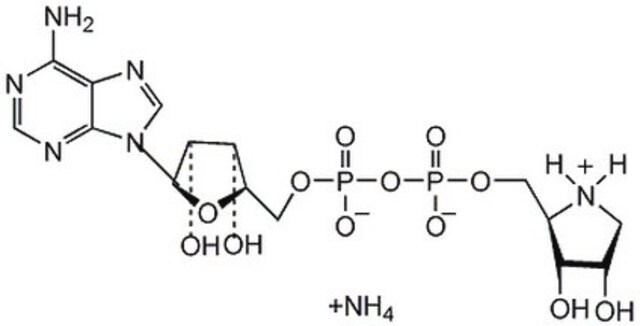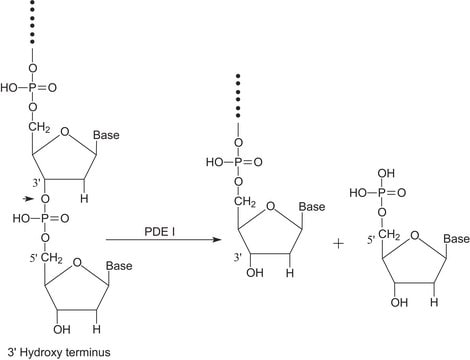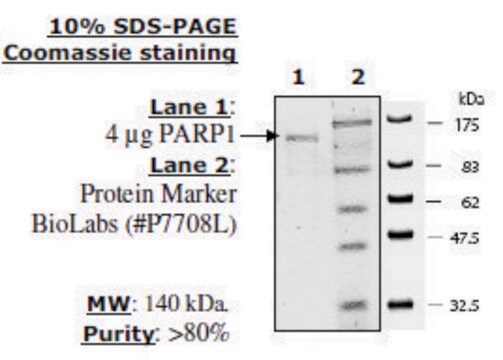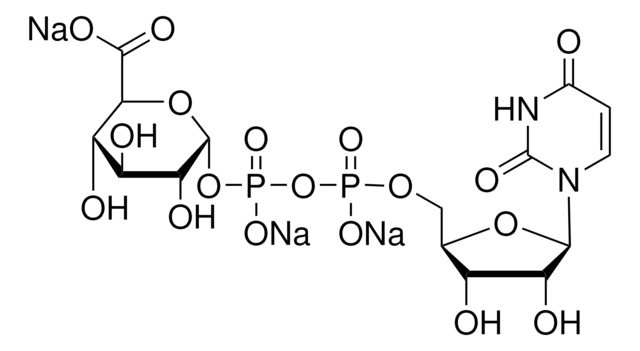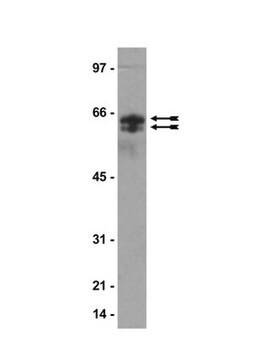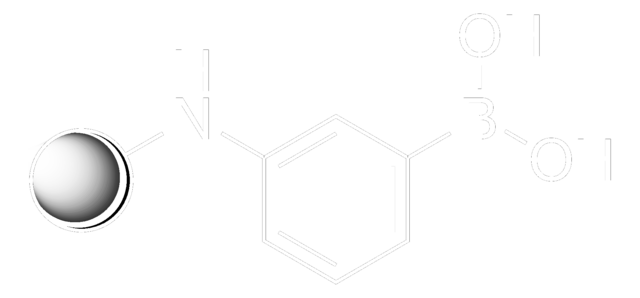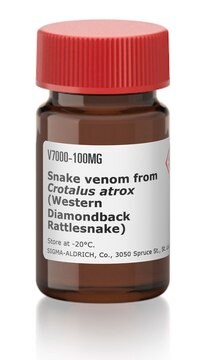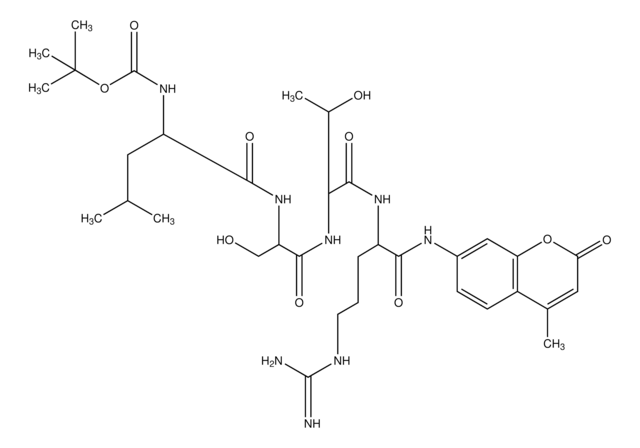SRP8023
PARG human
recombinant, expressed in Sf21 cells, His tagged, >95% (SDS-PAGE)
Synonym(s):
FNDC5 (cleaved), Poly(ADP-ribose) glycohydrolase
About This Item
Recommended Products
biological source
human
recombinant
expressed in Sf21 cells
tag
His tagged
Assay
>95% (SDS-PAGE)
form
liquid
mol wt
~110 kDa by SDS-PAGE
packaging
pkg of 2 μg
concentration
≥0.2 mg/mL
technique(s)
cell based assay: suitable
color
clear
solubility
water: soluble
UniProt accession no.
shipped in
dry ice
storage temp.
−70°C
Gene Information
human ... PARG(8505)
General description
Application
Biochem/physiol Actions
Physical form
Other Notes
Signal Word
Danger
Hazard Statements
Precautionary Statements
Hazard Classifications
Repr. 1B
Storage Class Code
6.1D - Non-combustible acute toxic Cat.3 / toxic hazardous materials or hazardous materials causing chronic effects
WGK
WGK 1
Flash Point(F)
Not applicable
Flash Point(C)
Not applicable
Regulatory Listings
Regulatory Listings are mainly provided for chemical products. Only limited information can be provided here for non-chemical products. No entry means none of the components are listed. It is the user’s obligation to ensure the safe and legal use of the product.
EU REACH SVHC Candidate List
EU REACH Annex XVII (Restriction List)
EU REACH Annex XIV (Authorisation List)
Certificates of Analysis (COA)
Search for Certificates of Analysis (COA) by entering the products Lot/Batch Number. Lot and Batch Numbers can be found on a product’s label following the words ‘Lot’ or ‘Batch’.
Already Own This Product?
Find documentation for the products that you have recently purchased in the Document Library.
Our team of scientists has experience in all areas of research including Life Science, Material Science, Chemical Synthesis, Chromatography, Analytical and many others.
Contact Technical Service